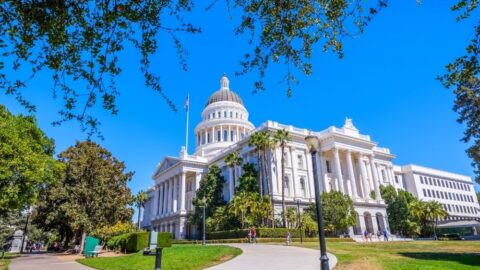(CNN) — When Gemma Hickey tried to travel to Ontario in January 2017 with a Canadian passport marked female, airport personnel questioned it.
Hickey — who presents as “trans masculine nonbinary” and uses they/them pronouns — had to verify their gender in other ways, which extended the process for boarding the plane. And that didn’t prevent additional questioning once Hickey was seated.
Hickey began medically transitioning from a woman to nonbinary in December 2015. “And, of course, (I) was going to Ontario to get top surgery. So obviously I was quite vulnerable.”
But while US activists continue to push for change in this area, other countries have made progress in moving beyond the male-female gender binary on passports — though not without some challenges.
A world beyond Ms and Fs
Hickey said the experience on the 2017 Ontario flight strengthened their resolve to obtain an X-marked passport. They started by applying for a new birth certificate with an X gender marker, which Hickey requested the court issue without requiring medical certification.
Hickey received the new birth certificate in 2017 and the new passport in 2018. Hickey’s efforts also helped pave the way for more widespread change: The Canadian government officially began allowing X on identification documents in June 2019.
The X-marked passport “made travel easier,” Hickey said. “I was just delighted to report, after the fact, that I didn’t have any issues, especially for young people out there who are concerned about this.”
Alexander Cohen, the press secretary for Marco Mendicino, Canada’s Minister of Immigration, Refugees and Citizenship, said via email that the changes have been “effectively implemented without any issues.”

This sample passport from Iceland shows the gender neutral option X. This sample passport is not in use, and the personal information shown is not real.
Registers Iceland
In the year after implementation, he added, there were 286 requests for the X gender marker in passports and other travel documents in Canada. In Iceland, there have been 194 changes in gender registration in the Icelandic population registry, said Margrét Hauksdóttir, CEO of Registers Iceland, via email.
Currently, if a US citizen wants to change their passport gender, they have to provide medical certification that they have transitioned from male to female or vice versa. Therefore, a person can select only either male or female — a choice that excludes intersex people, nonbinary people and transgender individuals who don’t identify as simply male or female.
“Across the United States, the process for updating your legal name and gender marker is extremely complicated, burdensome, expensive and difficult to access for many people,” said Arli Christian, a campaign strategist with the National Political Advocacy department of the ACLU, who is leading the ACLU’s efforts to push the Biden administration. “We do not need our government to be asking about our medical treatment, or our own personal needs.”
“Nonbinary people, people who are not male or female, exist and are here and need appropriate documentation as well,” Christian added. “Asking a nonbinary person to fill out a form and declare male or female when neither of those options are appropriate for them is forcing them into a lie and demeaning … It’s really important that the US recognize that.”
Roadblocks to Xs and Os
Even countries that offer a third gender option on passports can’t guarantee that entry, transit or legal protection will be allowed by border control authorities of other countries.
“While Canadians with the gender identifier ‘X’ do not have to specify anything else on their passports,” Cohen said, “there is the possibility that they may still be asked by foreign border authorities to provide gender information as either male or female when traveling.”
In the US, which lags behind Canada, Australia and other nations in addressing this issue, the “understanding of sex and gender being limited to male and female is an outdated understanding,” Christian said. “For many centuries, people have understood that there are many genders.”
Not every transgender, intersex or nonbinary person is a fan of the X or O options. Some people in these groups prefer to be recognized for specifically who they are, and for the markers to reflect that.
As an activist, Hickey was used to facing harassment, violent threats and property damage spurred by hate, they said. Coming out as nonbinary and media attention to Hickey’s birth certificate case resulted in an increase in hate mail and threats of violence, sexual violence and death. But “the outcome was so rewarding,” Hickey said.
“When I had my passport in hand, I felt like I had wings in more ways than one. … I felt like the possibilities were endless, that I could go anywhere as my true self and there was a space for me, and I felt happier,” Hickey said.
“Not just for me personally, but for all these young people that I work with, who are struggling with gender, who now have a space. … There’s always work to be done. But I felt that day was certainly a day of celebration.”







Recent Comments